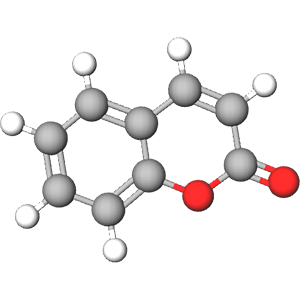

Coumarin is a fragrant organic compound found naturally in many plants, such as cinnamon, tonka beans, and lavender. It has a sweet, vanilla-like scent with hints of freshly mown hay. In the fragrance industry, Coumarin is valued for its ability to add depth and warmth to perfume compositions, often serving as a foundational note in oriental and gourmand fragrances. Its versatility makes it a popular choice for enhancing the complexity and richness of scented products.
Widely used in perfumes, colognes, and other scented products to contribute a warm, sweet aroma. It plays a key role in creating or complementing spicy, oriental, and gourmand scent profiles.
IUPAC Name: chromen-2-oneCAS Number: 91-64-5
Molecular Formula: C9H6O2
Molecular Weight: 146.14 g/mol
Boiling Point: 566.6-570.2 °F (297.00-299.00 °C)
Melting Point: 159.8 °F (71.00 °C)
Class: Lactone
Use/s: Scent
Synonyms
1: coumarin 2: 2H-Chromen-2-one 3: 2H-1-Benzopyran-2-one 4: cumarin
Chemist Says
Coumarin appears as colorless crystals, flakes or colorless to white powder with a pleasant fragrant vanilla odor and a bitter aromatic burning taste. (NTP, 1992)
Scent: Vanilla
Scent profile
Scent profiles are inherently subjective and can significantly differ among individuals, and may also be influenced by the conditions at the time of evaluation. The information provided here is a synthesis of data from diverse sources, including books, cross-references, artificial intelligence analyses, and chemical research sites, aiming to present a comprehensive overview. We've distilled this information to highlight the most frequently observed scent profiles for each molecule or compound, offering a generalized perspective.
1: Sweet, Vanilla-like, Woody, Fresh
2: Sweet, Grassy, Vanilla, Hay
3: Pleasant, fragrant odor resembling that of vanilla beans.
 Acute Toxic
Acute Toxic Irritant
Irritant Health Hazard
Health Hazard